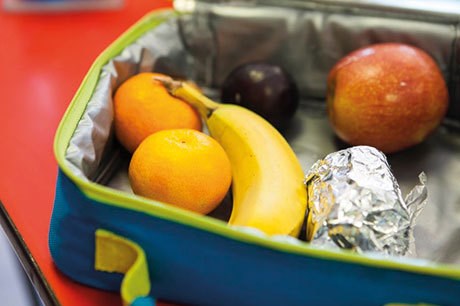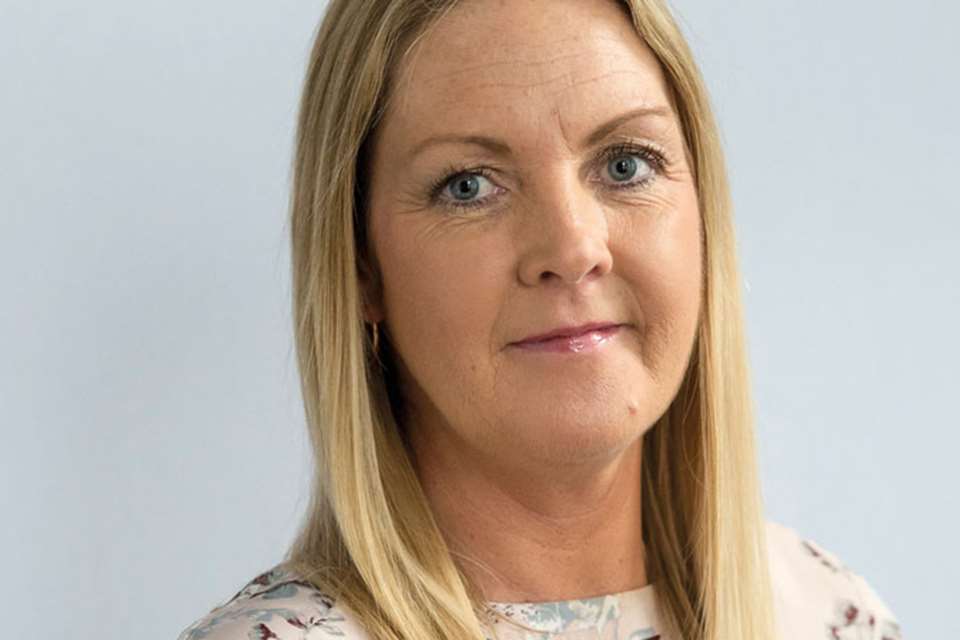Nursery Management: Nutrition - Fat-fighters
Gabriella Jozwiak
Monday, March 20, 2017
Parents of overweight children are often in denial about the problem or claim to be simply too busy to address it – so how should settings approach the issue? Gabriella Jozwiak finds out

One in ten children is obese by the time they start primary school aged four. And it doesn’t stop there. By the time children turn into adults, the proportion of those classified as overweight or obese is 63 per cent.
We all know that instilling healthy eating habits early is the best way to set up children for a lifetime of healthy choices. But what can practitioners do if parents are in denial about their children’s health, or think they are too busy to ‘do’ healthy?
Talking to parents about their toddlers’ diets can be challenging. Research published in 2016 by Newcastle University found parents can be defensive when settings offer healthy-eating advice. The study of 15 parents revealed they felt they were being ‘told what to do’ or ‘that they are bad parents. Research associate Lorraine McSweeney says the best way to overcome a ‘them and us’ mentality is for nurseries to adopt an integrated approach to healthy eating.
‘A whole-setting approach should involve parents and carers in the development of nursery health policies,’ she says. ‘Although it is useful to provide parents with written information, there should not just be a focus on education. Fun projects and activities based around healthy eating can help to get the whole family involved.’
‘SHARED VISION’
A good place to start is the Children’s Food Trust, which produces voluntary food and drink guidelines for early years settings. Head of nutrition Patricia Mucavele says practitioners should reinforce healthy-eating messages through tools such as a child’s daybook, and give lists of food items parents should avoid. She suggests parents may give their children unhealthy choices because they are time-poor. ‘It’s about teaching them quick, healthy dishes to cook using household ingredients,’ she says.
The trust suggests food policies are reviewed every year and include details on celebrating special events and birthdays. Ms Mucavele points out that if all birthdays were celebrated with a cake, a large setting could have one every day. She says having rules about whether parents are allowed to provide treats on celebration days is a decision for providers to make individually, but suggests they encourage celebrating by having different types of fruit or non-food items. ‘I urge all settings to do it in consultation with parents and staff,’ she says. ‘You want everyone to embrace that policy and have a shared vision.’
Platt Bridge Community Childcare in Wigan has worked closely with parents to improve attitudes to healthy eating. Located in an area with higher than average deprivation, it has tackled lunchboxes filled with processed foods and chocolate bars with a variety of measures. These include inviting parents to ‘inspire sessions’, healthy lunchbox workshops, and an eight-week course where parents are given information and examples of healthy foods, and taught how to prepare cheap, quick and healthy meals.
Practitioners also visit parents at home before a child starts nursery to build relationships. Early years lead Fay Blackburn says parents ‘open up at home and are very forthcoming about any issues linked to diet and health’.
Every lunchtime, children empty their lunchboxes onto a plate. Ms Blackburn says some parents have provided too much food, which led to them having conversations with the parent and providing guidelines. A study published by the Infant & Toddler Forum in 2016 suggests getting portion sizes wrong is common, with 79 per cent of parents routinely giving larger amounts than recommended.
Unpacking the lunchboxes also gives practitioners the chance to encourage children to make healthy choices, if their parents have packed a foodstuff the nursery has disallowed such as chocolate, fizzy drinks or high-sugar items. ‘If they’ve chosen not to eat something, it stays in their lunchbox and we send it back home with a slip for the parents to say they haven’t had the chocolate bar, for example, because it doesn’t fit our policy,’ says Ms Blackburn.
Parents are not shocked by such measures, because the nursery has a strong open-door policy. ‘We’ve never had any issues we’ve not been able to address,’ she says.
Key to adopting a whole-setting approach also means getting the staff involved, and this isn’t always easy. Active Matters director Lala Manners warns practitioners can be barrier to communicating healthy messages if they are not setting the correct example. ‘There is a percentage of us with weight issues,’ she says. ‘Let’s be honest about it and be in it together.’
Ms Manners says childcare providers can be ‘very avoidant’ of leading physical activities. ‘They are terrified of losing control, hurting themselves or the children, and of getting on the floor and not being able to get up,’ she explains. ‘That will have a detrimental effect on what they provide for the children.’
Public Health England advises under-fives are physically active for at least three hours a day. But Government statistics published in 2015 showed only nine per cent of girls and ten per cent of boys aged two to four met this target. Ms Manners says part of the problem is that the assessment of physical development within the EYFS is linked to movement-supporting learning, rather than health. This was set to change, and the Government’s 2016 childhood obesity strategy stated it would alter the EYFS to reflect guidelines for physical activity. However, the revised EYFS was published on 3 March with only a footnote saying ‘The Chief Medical Office has published guidance on physical activity that providers may wish to refer to’.
GETTING PARENTS ON-SIDE
Talking to parents, however difficult, is an essential part of any strategy when it comes to changing their behaviour towards their children. NDNA early years adviser Nicola Wardropper suggests practitioners open the conversation with some positive points about the child, then ask parents what they think about diet and activity levels. Visual aids, such as leaflets, can reinforce messages.
‘Help by providing parents with small steps and strategies to support their child and emphasise the need for you all to work together,’ says Ms Wardropper. ‘Establish common ground. Explain that you are there to help and support all children, so they don’t feel like their child is different.’
In some cases, nursery practitioners may feel a child needs more urgent attention and want to involve an external agency. A health visitor may be the obvious port of call, as they are sometimes in settings conducting integrated two-year reviews. This can also reinforce messages from a practitioner, and involvement of a health professional could be the jolt a parent needs.
Health Visitor Institute spokeswoman Sara Patience says staff should always speak to parents first and gain consent before approaching a health visitor. ‘This would be logical to prevent anxieties from the parents,’ she says. ‘If it’s a safeguarding concern, they should make their own referral to local authority services.’
CASE STUDY: KLOISTERS KINDERGARTEN & PRE-SCHOOL, ROCHESTER

Louise Deane, curriculum lead, Kloisters Kindergarten
‘It can be difficult to approach parents about unhealthy eating. We look after 87 children. About half bring a lunchbox, and the rest receive a hot meal.
‘Three years ago we introduced new healthy-eating policies after I did training with the Children’s Food Trust. Since then we have fewer conversations with parents because we made our strict policies clear to them when they viewed our setting.
‘We started changing our policies with an anonymous online parent questionnaire. This revealed parents were unhappy with how we communicated what children were eating. Now we display menus on a board in our lobby and Facebook page. Parents can se e what’s being served. We also educated our staff to ensure they’re mindful about what parents want to know.
e what’s being served. We also educated our staff to ensure they’re mindful about what parents want to know.
‘The survey revealed the majority of our children were having twice as much milk a day as they needed. We used to offer milk with our morning and afternoon snacks, but found our children were drinking milk before bed and eating dairy products in the day. They were bulking up on dairy and eating less of anything else. Now we just offer water.
‘I did a parents’ presentation evening. I mocked up some lunchboxes with popular children’s products that are advertised as being healthy and part of your five-a-day. I prepared an equivalent lunchbox with bags of sugar and lard weighed up to the same amounts as those contained in the “healthy” lunchbox. This shocked the parents and was a good way of convincing them to provide healthy lunches.
‘We also give out lunchbox guidance leaflets. If a child comes in with a really healthy lunch box, I snap a picture of the contents and put it on our social media pages. But [when we see the opposite], I don’t do shaming pictures.’








